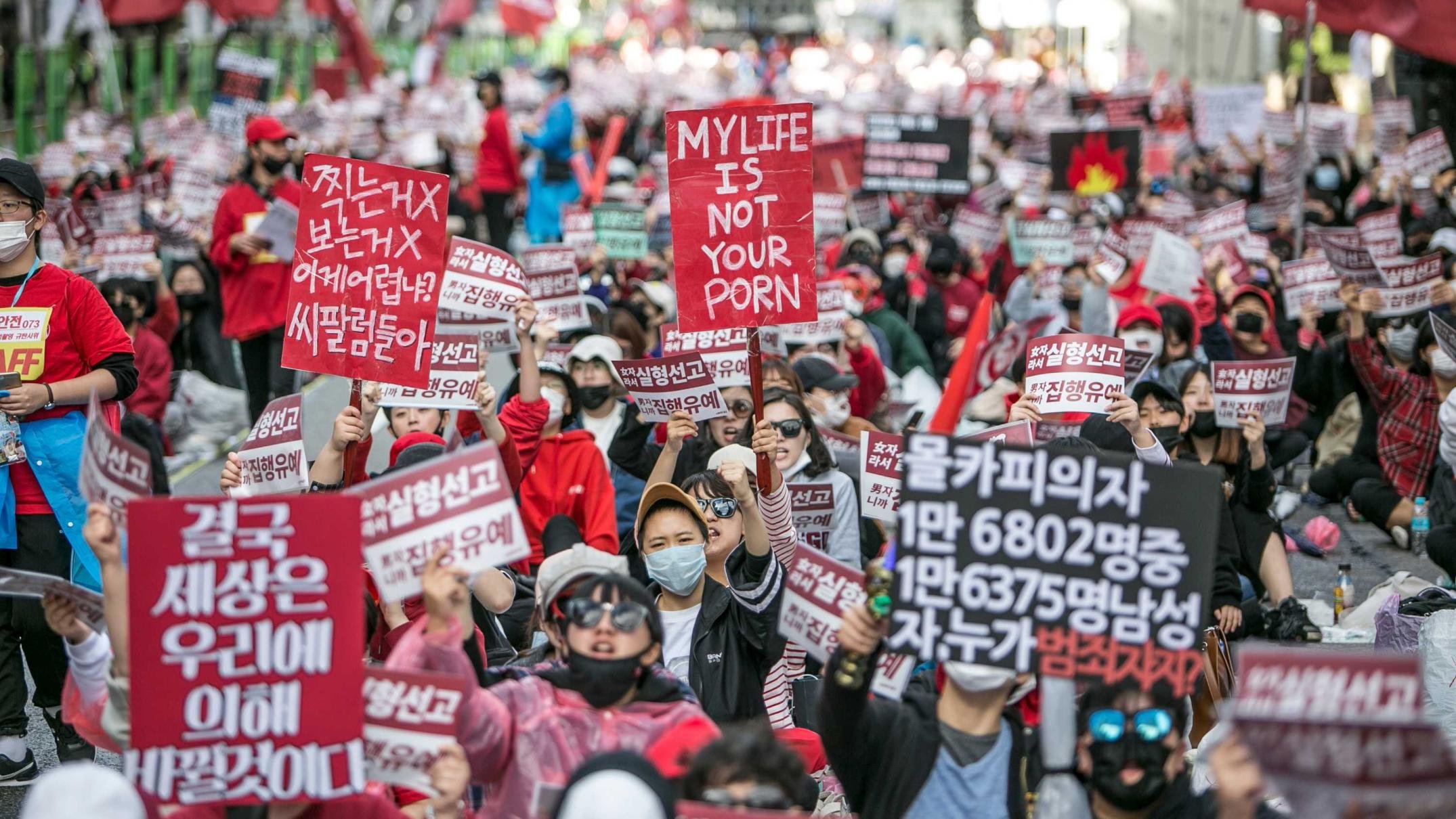The departure of Western forces from Afghanistan marked a drastic shift for Afghan women, once granted freedoms during the Taliban's absence. Now, under Taliban rule, a "suicide pandemic" disproportionately affecting women has emerged. Taliban-imposed gender restrictions have triggered a mental health crisis, and the rollback of women's rights and their erasure from public life has led to profound despair and mental health deterioration. Such institutionalized oppression prompts some women to view suicide as the only option to escape their desperate situation, signalling a worrisome impact of the Taliban’s regime on women’s survival.
Having the world’s lowest fertility rate, South Korea faces a complex demographic crisis amid an intense gender war, where marriage and childrearing have become politicized. As a response to the government’s pro-natalist policies aimed at reinforcing the country’s demographic security and an increasing economic precarity among young Koreans, radical feminists have taken a political stance against patriarchal and conservative expectations placed upon women in Korean society. Articulated around the 4B movement, they say no to sex, dating, marriage, and children, reinforcing a growing trend for Korea’s demographic future.
Following the tumult of the Capitol Riot on January 6th, 2021 and the consequent social media ban of former U.S. President Donald J. Trump, debates around Internet governance have regained momentum. This has led to fervent contention on freedom of speech and social medias’ regulatory frameworks of content moderation. A key target of this moderation is extremist groups with a presence on social media, including the alt-right and jihadists. In particular, women of both groups have been playing an important role in the propagation of extremist ideologies online, frequently instrumentalising hyper-femininity to attract new followers. Because normative gender roles are exploited by violent groups, a gender analysis of how women propagate extremist ideologies is essential to effectively respond to online extremism. This article investigates similarities and differences of alt-right and jihadist women’s online presence and the role gender plays in shaping their respective propagandistic and recruitment methods on mainstream social media platforms.
The Democratic Republic of Congo is facing “ a war within a war”, in reference to the large number of rapes perpetrated during the ongoing conflict in the Kivus. The academic literature has widely documented how rape is used as a weapon of war by combatants against women in the country. Several factors can explain, but never justify, the use of rape as a weapon of war. The two prominent ones are poverty and patriarchy. However, some researchers have challenged the ‘rape as a weapon of war narrative’, warning that this account excludes the increasing number of rapes perpetrated by ‘ordinary citizens’.
In 2014, the weaponisation of the female body materialized once again when Da’esh systematically raped and tortured thousands of Yazidi women, starting a genocide against the Yazidi people. Wrongfully labelled as dirty devil-worshippers by others, the Yazidi have suffered continuous massacres throughout history and are now faced with unbearable physical and mental traumas from the horrors brought upon them by Da’esh.
In male-dominated cultures characterised by machismo, women are victims of violence on a daily basis. In Latin America, hundreds of women are killed every year, simply for being women. Against this panoramic backdrop, this article focuses on the most severe form of violence against women (VAW); it concentrates on structural anti-female violence, particularly the weaponisation of the female body.
The use of bodies as weapons of war in the Donbas conflict is denied by the Ukrainian government and United Nations official reports, contrasting non-governmental organisation (NGO) documents which report the contrary. This article explores the gap between the survivors' testimonies, as captured by NGO research, and the official reports and questions the reasons for low victim reporting and high perpetrator impunity.
Myanmar’s discriminatory policies against the Rohingya have been extensively addressed by academics. However, wartime sexual violence and its impact on Rohingya women have been overlooked, therefore requiring more detailed research. Attention must be dedicated to how mass rapes are being conducted against women, causing severe physical and psychological harm.

By Nishant Joshi
October 27th, 2020
Caste oppression in India affects more than 16% of the population who are considered ‘subhuman’ according to the traditional Hindu Varna system. Many gruesome acts of sexual violence against women of this community have been recorded in the 21st century owing to their vulnerability and limited access to civil rights protection. This article explores the dynamics which perpetuate such crimes and the ideologies which pose massive barriers to the security of scheduled caste women.

October 14th, 2020
Ever since the endorsement of the Amsterdam Treaty in 1997, the European Union (EU) has committed itself to implementing the concept of “gender mainstreaming” into all its policies and institutions. At the time, the term was considered “potentially revolutionary” since it aimed to transform the meaning of including a gendered dimension in the EU by challenging the status quo of gender relations. However, since the treaty entered into force 21 years ago, feminist scholars have argued that the EU has failed to incorporate gender mainstreaming. This article is aimed to introduce the reader to the concept of gender mainstream
and its application to the EU´s external relations. It details
the ways in which gender mainstreaming has been implemented
and, in turn, influenced the capacity of the EU to bring theory
to practice.










This article critically analyses Afghanistan's future in the aftermath of the third Doha Accord, scheduled from June 30th to July 1st, 2024. Addressing issues from economic vulnerability to regional terrorism, it explores the exclusion of women from these pivotal discussions, highlighting gender disparities and human rights violations in Afghanistan's transitional process. While Taliban participation marked a positive step, the article examines intricate dynamics influencing Afghanistan's journey towards stability.